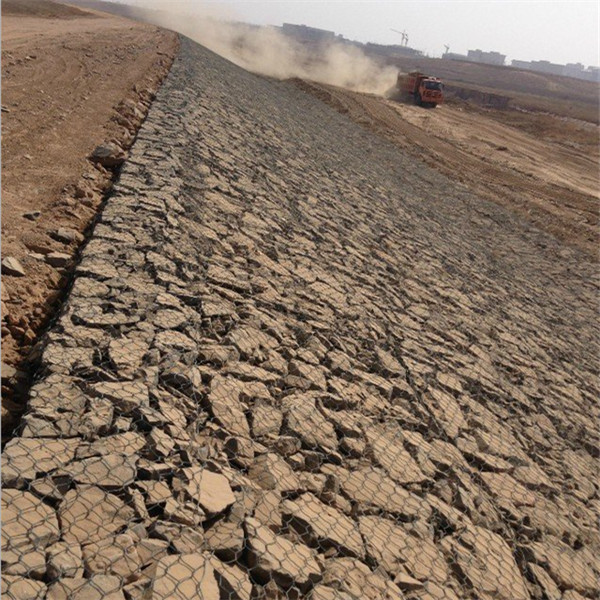Aug . 20, 2024 15:09 Back to list
Eco-Friendly Gabion Wall Manufacturers for Sustainable Construction Solutions
The Rise of Green Gabion Wall Manufacturers A Sustainable Approach to Modern Construction
In an era where sustainability and eco-friendliness are at the forefront of global consciousness, the construction industry is witnessing a significant shift toward more environmentally responsible practices. Among these innovations, green gabion walls have emerged as a popular choice for both residential and commercial projects. This article explores the role of green gabion wall manufacturers in promoting environmentally friendly construction solutions.
What Are Gabion Walls?
Gabion walls are structures made of wire mesh cages filled with rocks, concrete, or other durable materials. Traditionally used for erosion control, retaining walls, and landscaping, gabion walls offer exceptional strength and durability. Their permeability allows for natural drainage, reducing water pressure and preventing soil erosion—a crucial feature in construction design that promotes environmental sustainability.
The Green Gabion Movement
The term green gabion refers to gabion walls built with eco-friendly materials and methods. This movement focuses on using recycled or natural materials for filling the mesh cages, such as repurposed concrete, local stones, or even plant materials. Green gabion walls not only blend harmoniously with the environment but also enhance biodiversity by providing habitats for various species.
Sustainability in Construction
The construction industry is often seen as a major contributor to environmental degradation, emitting large amounts of carbon dioxide and consuming vast resources. However, green gabion wall manufacturers are paving the way for a more sustainable approach. By utilizing local and recycled materials, these manufacturers significantly reduce the carbon footprint associated with transportation and resource extraction.
Moreover, the manufacturing processes employed by green gabion wall producers often embrace energy-efficient technologies. By minimizing waste and implementing responsible sourcing practices, these manufacturers are setting industry standards for sustainability.
green gabion wall manufacturers

The Aesthetic Value of Green Gabion Walls
Beyond their environmental benefits, green gabion walls also serve an aesthetic purpose. The natural look of stone and the ability to incorporate greenery make them an appealing choice for architects and designers. With the right design elements, gabion walls can be structurally sound while enhancing the visual appeal of public spaces, parks, gardens, and commercial properties.
Landscape architects often integrate gabion walls into their designs to create visually striking borders that harmonize with the surrounding environment. Plantings can even be integrated into the wire mesh, leading to living walls that provide additional ecological benefits.
Challenges and Considerations
While green gabion walls offer numerous advantages, potential challenges must also be addressed. The choice of filling materials is crucial; using non-local or inappropriate materials can negate the sustainability benefits. Additionally, proper design and installation are essential to ensure the stability and longevity of the walls, considering factors such as local weather conditions and soil types.
Conclusion
As the demand for sustainable construction solutions continues to grow, green gabion wall manufacturers are well-positioned to lead this charge. With their commitment to using eco-friendly materials and practices, they are not only creating durable and beautiful structures but also contributing to a healthier planet. The integration of green gabion walls into our built environments reflects a significant step toward achieving a balance between human development and ecological preservation.
In conclusion, as more stakeholders in the construction sector acknowledge the importance of sustainability, embracing innovative solutions like green gabion walls will play a key role in shaping a more resilient and environmentally conscious future. By investing in this technology, communities can enhance their landscapes while protecting the planet for generations to come.
-
Why PVC Coated Gabion Mattress Is the Best Solution for Long-Term Erosion Control
NewsMay.23,2025
-
Gabion Wire Mesh: The Reinforced Solution for Modern Construction and Landscape Design
NewsMay.23,2025
-
Gabion Wall: The Flexible, Seismic-Resistant Solution for Modern Landscaping and Construction
NewsMay.23,2025
-
Gabion Wall Solutions: The Durable, Decorative, and Affordable Choice for Every Landscape
NewsMay.23,2025
-
Gabion Basket: The Durable and Flexible Alternative to Traditional Retaining Walls
NewsMay.23,2025
-
Gabion Basket: The Proven Solution for Slope Stability and Flood Control
NewsMay.23,2025
-
Versatility of Chain Link Fence Gabion
NewsMay.13,2025






